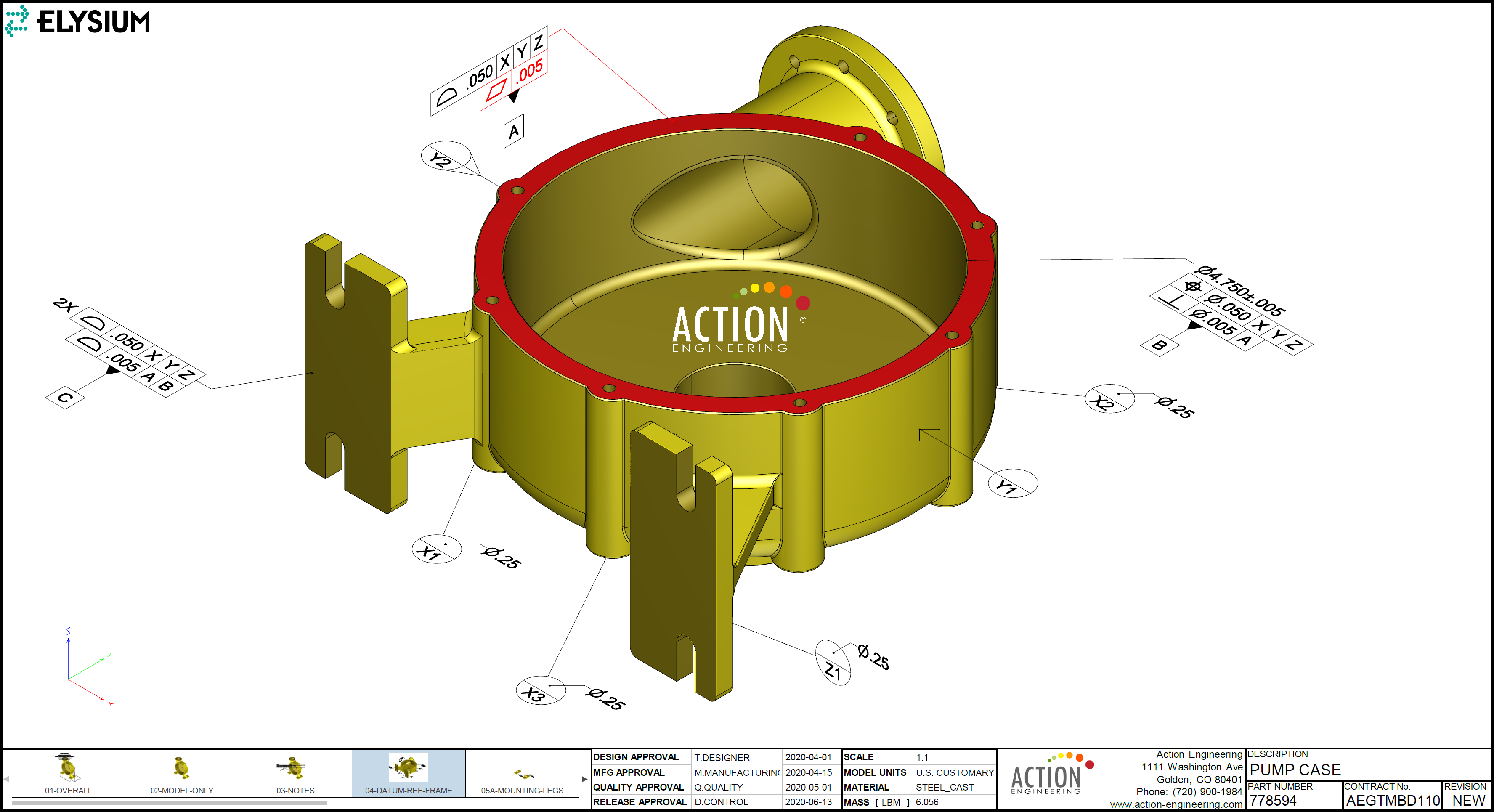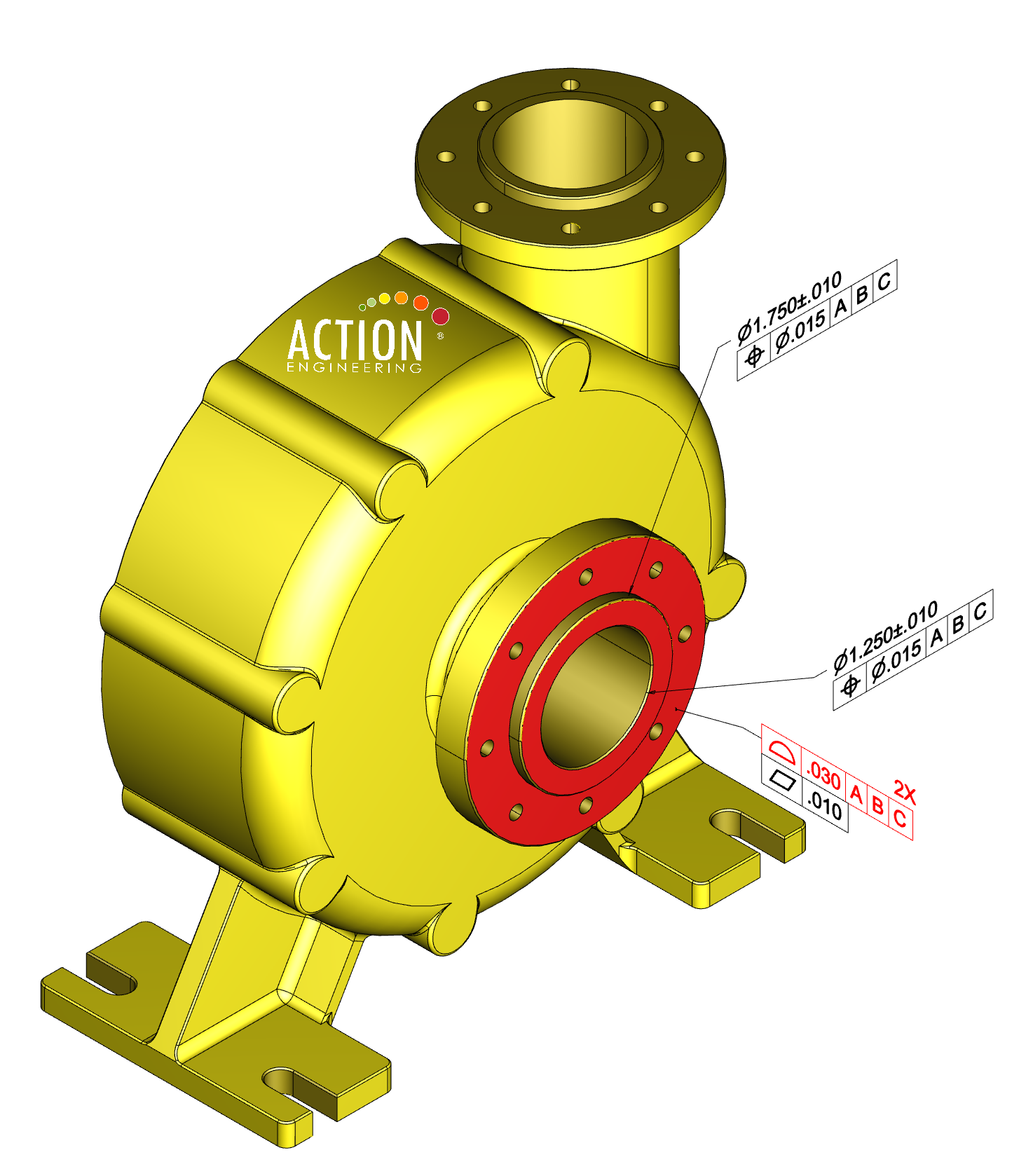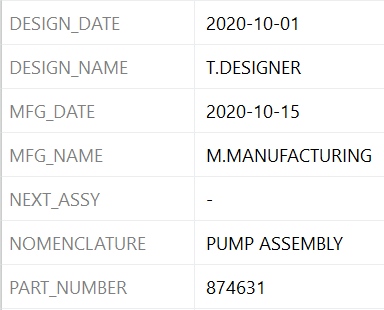| MBE Maturity Index - MBE Lexicon | Reference | 2022 |
This document contains the results from the MBIT, MBE Committee’s MBE Maturity Index task group.
The information conveyed in this document has been normalized to help progress the maturation of Model-Based Enterprise (MBE) for digital product realization.
Comments, suggestions, or questions on this document should be addressed to Curtis Brown, cbrown@kcnsc.doe.gov
Distribution Statement:
This document is: is an updated Rev B to NSC-614-4279 dated January/2022 Unclassified Unlimited Release (UUR).
This version is a working release and has been made available as a rubric tool.
Furthermore we continue to solicit peer review and appreciate any focus area validation and improvement requests via the Peer Comments worksheet.
| 3D Model of a physical item that is generated using drafting and design software. |
| A three-dimensional derivative model that is interactive and is published in a ubiquitous format. |  |
| Visible dimensions, tolerances, notes, text, or symbols. |  |
| A dimension, tolerance, note, text, or symbol required to complete the product definition or feature of the product that is not visible but available upon interrogation of the model. |  |
| An information provider that is sanctioned for a given lifecycle activity. |
| Approved by an authority for use in a lifecycle activity. |
| A digital representation of a thing approved by an authority for use in a lifecycle activity. |
| The model that a practitioner uses as the starting point for a given lifecycle activity. |
| a list of all the characteristics applied to a product. |
| A list of items, along with quantities and optional activity-specific information, needed to perform a particular lifecycle activity. |
| An unauthorized artifact (e.g., model) provided to a recipient. |
| A note of great importance that appears on a 3D model. |
| A note of great importance that appears on a product definition. |
| A requirement that address a customer's expectations for the functionality, performance, and quality of a product being developed. |
| Information represented in a formal manner suitable for communication, interpretation, or processing by human beings or computers. |
| Data Package | DP |
 |
| A collection of 3D model geometry, annotations, attributes, and presentation states that includes a lightweight viewable file format that is intended for human readability. It may also contain derivate data and associated lists. |  |
| An identifiable collection of related data that serves a lifecycle activity. |
| Data duplicated or extracted from the original. A copy of a derivative is also a derivative. |
| A model created from a source model that may be transformed into a different format. |
| A digital enterprise is a company where all business processes are driven by digital technology and big data. |
| The communication framework that allows a connected data flow and integrated view of an asset’s data (i.e., its Digital Twin) throughout its lifecycle across traditionally siloed functional perspectives. |
| A digital twin is a virtual representation of real-world entities and processes, synchronized at a specified frequency and fidelity. |
| A modeling method that allows designers to interact directly with the geometry of the model. |
| A computerized document intended for presentation to humans. |
| The condition of a derivative being embellished from its source with respect to an intended use. |
| Activities that enable an organization to act as a MBE, but do not directly add value to a product. |
| The final process model for a process definition. |
| The intermediate process model(s) with a process definition. |
| A derivative model with one-way associative propagation of source model changes. |
| A tolerance or specification applied to a part feature or product that requires verification. |
| A mode of operation performed by a person interacting with automation. |
| A capability that preserves information and makes it available for communities of interest. |
| A product definition dataset that includes a model-based definition. |
| A tool that an organization uses to assess itself as, and facilitate transition to, a model-based enterprise. |
| A mode of operation performed by a person without automation. |
| In the MBE Maturity Index, a state of maturity that contains a set of assertions. |
| The portion of the data set that contains model geometry and supplemental geometry. |  |
| An annotated model and its associated data that define the product in a manner that can be used effectively without a drawing graphic sheet. |
| An organization that uses digital methodologies as the foundation to enable deployment of products from concept to disposal. |
| Systems Engineering is a transdisciplinary and integrative approach to enable the successful realization, use, and retirement of engineered systems, using systems principles and concepts, and scientific, technological, and management methods. |
| A model in the format of its originating software application (e.g., Creo). |
| The mechanisms that integrates change and the ability to adapt change within an organization. |
| PDM System | Product Data Management System |
 |
| An information system that implements product data management. |
| A modeling process with the ability to change the shape of model geometry as soon as the dimension value is modified. |
| One item, or two or more items joined together, that is not normally subject to disassembly without destruction or impairment of designed use (e.g., transistor, composition resistor, screw, transformer, and gear). |  |
| An organizing principle that enables product data management to relate all product lifecycle data to a single point of reference. |
| The record of heritage that proves the veracity of a data item. |
|
[Primary] Any information that defines the physical or functional characteristics of a product, to ensure the design intent.
[Alt] The activity that defines a process that realizes a product. |
| A dataset that contains process definition. |
| A system model that encapsulates a process definition. |
| Product Definition Data, Technical Data, Item, Feature, Drawing, Item. IdentificationIncludes materials, parts, components, subassemblies, assemblies, and equipment. The term product shall also encompass a family of products. |
| A tolerance or specification applied to a feature or product that requires verification. A characteristic has a local designation identifier(s) and may have a criticality associated with it. |
| A representation of information about a product in a formal manner suitable for communication, interpretation, or processing by human beings or by computers. |
| A system that manages as-designed data and is the authoritative source for the geometry, attributes, CAD BOM, and revision. |  |
| Product Data Management Activities | PDM Activities |
 |
| Activities that interrelate product data. |
|
[Primary] Any information that defines the physical or functional requirements of a product, to ensure design intent.
[Alt] The activity that defines a product. |
| An information system that stores record copies (44 U.S.C.3301) of product definition for their long-term archive and retrieval. |
| The record of transmittal and supporting procedures that authorize product definition for a lifecycle activity. |
| A collection of one or more data file(s) that discloses, directly or by reference, by means of presentation (e.g., graphic or textual), representation (e.g., semantics or machine readable), or a combination of both, the physical or functional requirements of an item. |
| An identified set of product definition that fully defines a product. |
| A system model that encapsulates a product. |
| The series of stages through which a product passes during its lifetime. |
| Data that pertains to the product lifecycle. |
| A system that manages as-built design information and is the authoritative source for the eBOM, changes, data package, design deviations, and usage. |  |
| A requirement that address a product's purpose, its features, functionalities, and behavior. |
| A hierarchical list of items that constitute a product. |
| 3D annotations (dimensions and tolerances), metadata, notes and attributes needed to define the product beyond the 3D geometry. |
| Activities involved in manufacturing verification, testing, inspection, and product acceptance. |
| An ANSI/DMSC standard for computer-interpretable quality information. |
| The single authoritative source that contains the original information item. |
| A model that represents geometric and/or spatial relationships. |
| The initial process model for a process definition. |
| Data elements included in product definition data to communicate design requirements but not intended to represent an item. |
| Structure separate from the part geometry that is created in order to provide a base and anchor for the part during the building process. |
| A digital representation of a thing provided as complementary to a primary artifact. |
| A composite of equipment, skills, and techniques capable of performing or supporting an operational role or both. A complete system includes all equipment, related facilities, material, software, services, and personnel required for its operation and support to the degree that it can be considered a self- sufficient unit in its intended operational environment. |
| A logical model of interconnected structures, behaviors, parametrics, and requirements of a system. |
| Activities for system engineering of systems. |
| The authoritative technical description of an item. This technical description supports the acquisition, production, inspection, engineering, and logistics support of the item. The description defines the required design configuration and/or performance requirements, and procedures required to ensure adequacy of item performance. It consists of applicable technical data such as models, engineering design data, associated lists, specifications, standards, performance requirements, quality assurance provisions, software documentation and packaging details. |  |
| Regarded with confidence by a consumer, and concurrently being certified, authorized, and authenticated. |  |
| Facts given for storage or processing that are regarded with confidence by a consumer, and concurrently being certified, authorized, and authenticated. |
| An activity that assures that a product satisfies intent. |
| An activity that assures that a product satisfies requirements. |